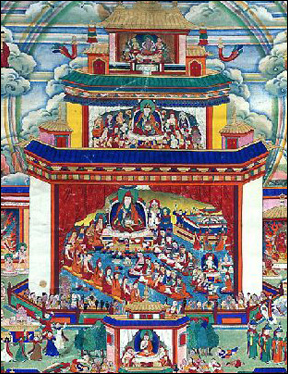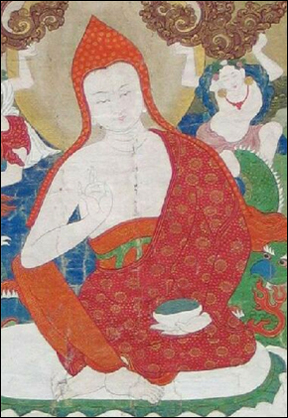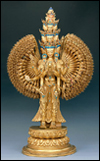 |
||
BROKEN LINKS
Sometimes there are broken image links on the Himalayan Art Resources
(HAR) website. Although most of the images on the site are stored in
the HAR server storage, several thousand images are retrieved from
museum or private websites. When these sites malfunction or the Url
addresses change then a broken link is experienced. The HAR policy
is to try and limit the number of external links.
The HAR website has an extensive network of links to the Tibetan
Buddhist Resource Center (TBRC), an encyclopedic database of
Himalayan literature and history. The HAR-TBRC links are currently
not working. The database architecture of the TBRC website has been
extensively updated and the new links to all of the HAR data records
will be re-connected after October 15th.
Number Sets Index
A comprehensive list of popular art subjects grouped by number
and name has been added to the Index Page.
Tibetan Year Chart
A convenient Tibetan-Western Year conversion chart has been added
to the Glossary Page.
Licchavi Kings Chronology Chart
Years and dates found inscribed on Nepalese art generally
follow royal chronology. A Licchavi chart has been added to the
Glossary Page.
Archaeology of Upper Tibet, John Bellezza
The Lhasa gtsug lag khang: Observations on the Ancient wood Carvings by Amy Heller
The Lhasa gTsug lag khang ("Jokhang"): Further Observations on the Ancient Wood Carvings by Mary Shepherd Slusser
Tracing the Reception and Adaptation of Foreign
esthetic elements in Tibetan sculpture
Shechen Archives, Gallery II
New images from 18th and 19th century Eastern Tibet have been added
to Gallery II.
Khokhlov Collection of Sculpture
A small collection of metalwork sculpture from a collector in Moscow,
Russia.
Collection
of Jane Werner-Aye
Carved wooden blocks
are used to create prayer flags, banners, book pages, repetitions of
mantras for prayer wheels and many other ritual items.
Torma Molds (Wood)
Torma molds are used to create barley dough offerings in specific
shapes and used in ritual practice.
Bon Prayer Flags
Prayer flags are a Himalayan, Tibetan, and Central Asian phenomenon.
Bon prayer flags are some of the earliest and retain emblems of
ancient Tibetan culture and beliefs.
Eight Great Mahasiddhas
The Eight Mahasiddhas are a popular theme in Himalayan and Tibetan
art. Work has been done to identify the principal figures and
tell their stories.
A Painting
and Praise to the Mahasiddhas
The earliest praise, currently known in Tibetan literature, addressed
to the Eight Mahasiddhas was composed by Dolpopa Sherab Gyaltsen
in the 14th century. An 18th century painting from Eastern Tibet
follows the written praise very closely.
Eight
Siddhas as Minor Figures
Artworks
with representations of the Eight Siddhas as minor figures are
very common. The eight siddhas are not always the same and
substitutions are made based on popularity and differing religious
tradition.
About Us | Contact Info | Sign up | Newsletter Archive
© 2006 The Shelley
and Donald Rubin Foundation


